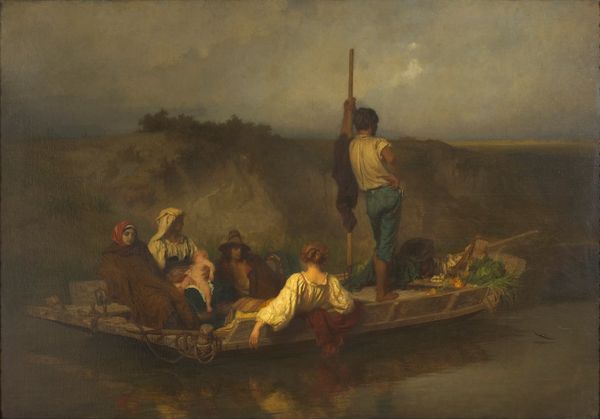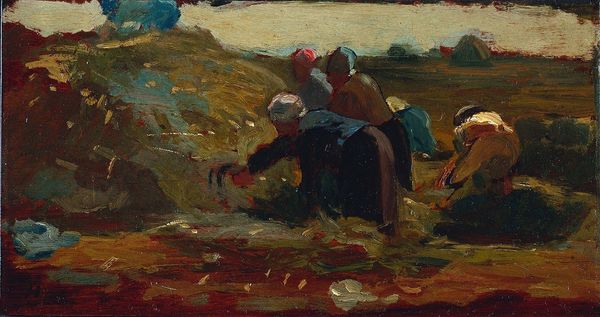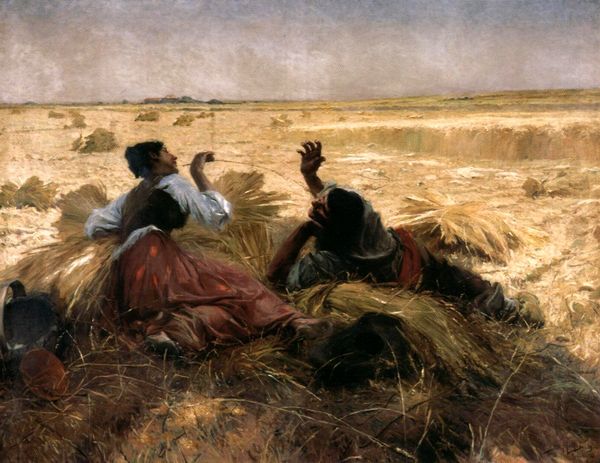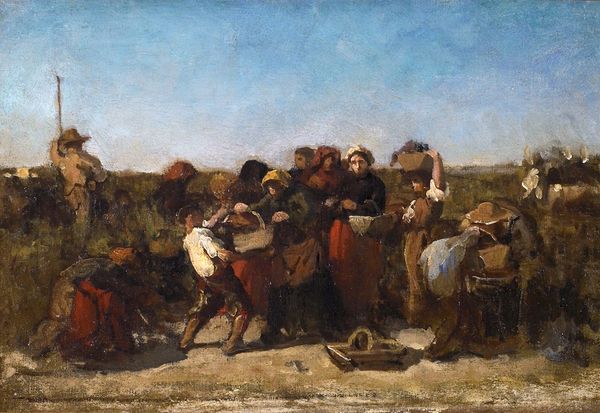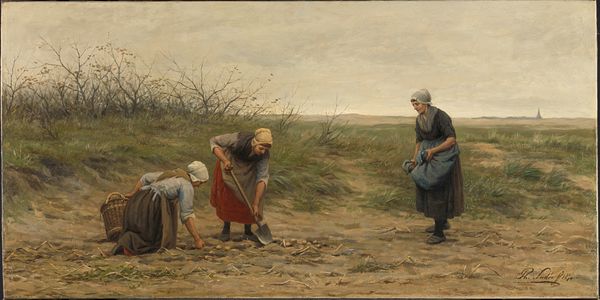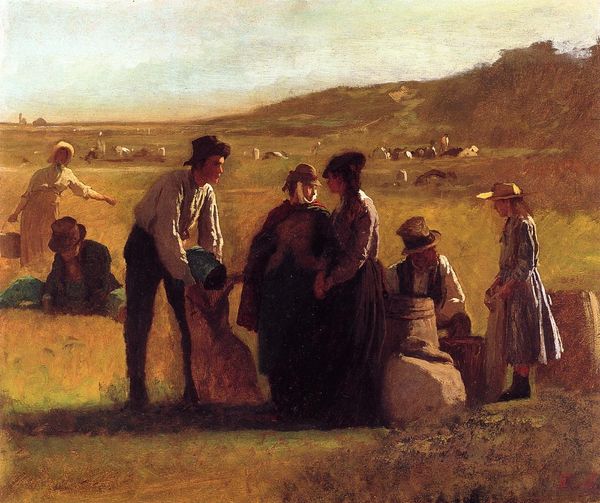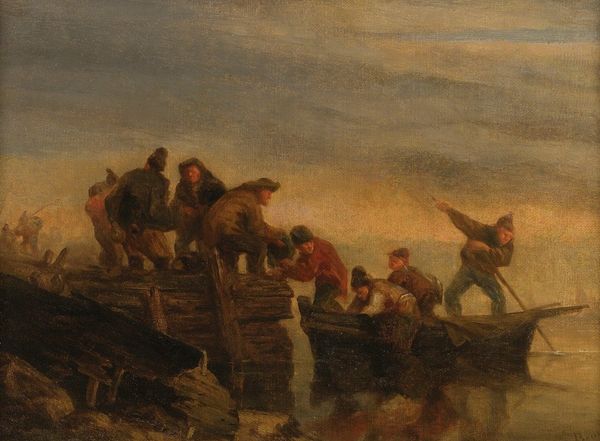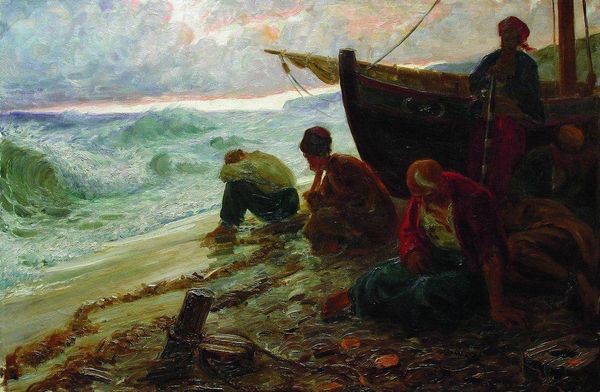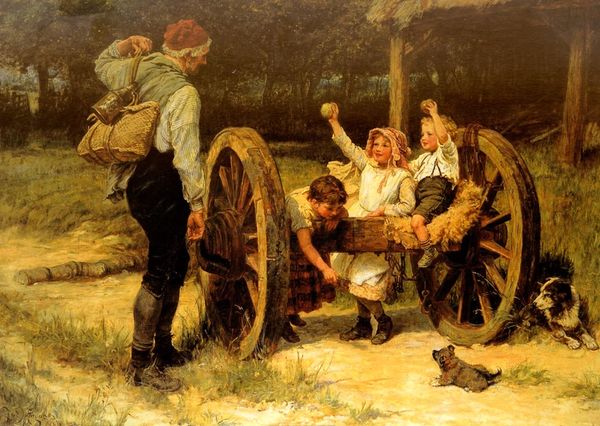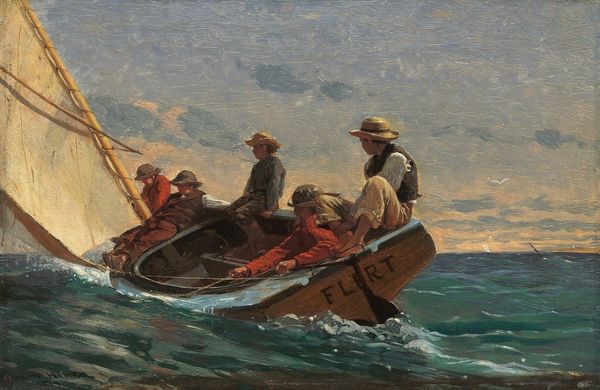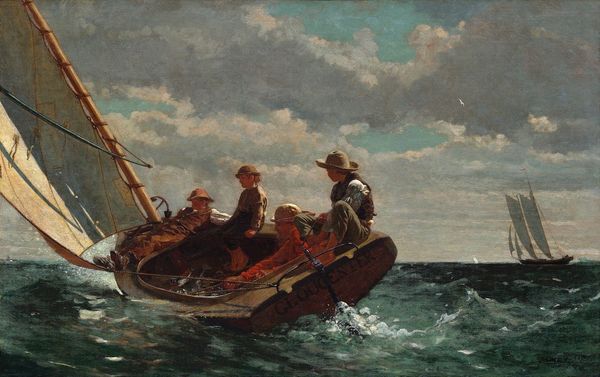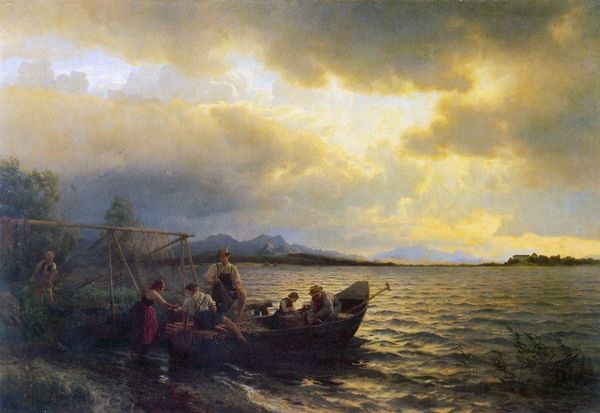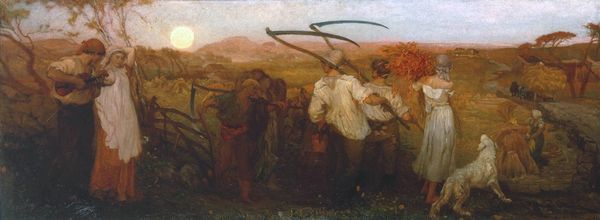
#
gouache
#
figurative
#
acrylic
#
possibly oil pastel
#
oil painting
#
acrylic on canvas
#
underpainting
#
painting painterly
#
watercolour illustration
#
watercolor
#
fine art portrait
Copyright: Public Domain: Artvee
Editor: This is Edward Mitchell Bannister's "People Near Boat," painted in 1893. It looks like an oil painting depicting two men pushing a boat into the water while two women stand by with baskets. The colors are quite muted, giving it a rather melancholic feeling. What social dynamics do you observe within this scene? Curator: That melancholic feeling you’re picking up on is key. Considering Bannister's position as a leading African American artist of the late 19th century, and the prevalence of images depicting Black people in servitude at the time, it's critical to view this piece through the lens of representation and self-determination. How might this seemingly simple scene of laboring figures reflect Bannister’s broader commentary on identity and agency? Editor: I hadn't thought about it that way. It challenges assumptions. The figures, although engaged in physical labor, possess a certain dignity and perhaps a communal bond. It almost feels… romantic. Curator: Exactly! It rejects stereotypes of the era. Now, consider the landscape: How does it function in relation to the figures? Is it merely a backdrop or something more integral to the narrative? Editor: I see your point. The figures and the landscape are intimately connected; there's an understated beauty in this integration, a peaceful co-existence with nature. Bannister’s choice to paint ordinary people in their environment… is this a way of reclaiming visibility and space for Black individuals within the broader American narrative? Curator: Precisely. The act of depicting Black people engaged in everyday life, in a style that mirrors and yet subverts dominant artistic trends, is in itself an act of resistance and reclamation. It inserts them into the visual fabric of American society. It reframes who is allowed to take up space in visual culture. Editor: I’m beginning to see this work in an entirely different light. What appeared at first glance as just a boating scene, reveals a far more profound meditation on identity, labor, and belonging. Thank you for sharing this context, it is a new way of considering not only Bannister’s artistic decisions, but the power of visual representation itself. Curator: The intersection of art and social justice continues to reveal these narratives for each new generation.
Comments
No comments
Be the first to comment and join the conversation on the ultimate creative platform.
